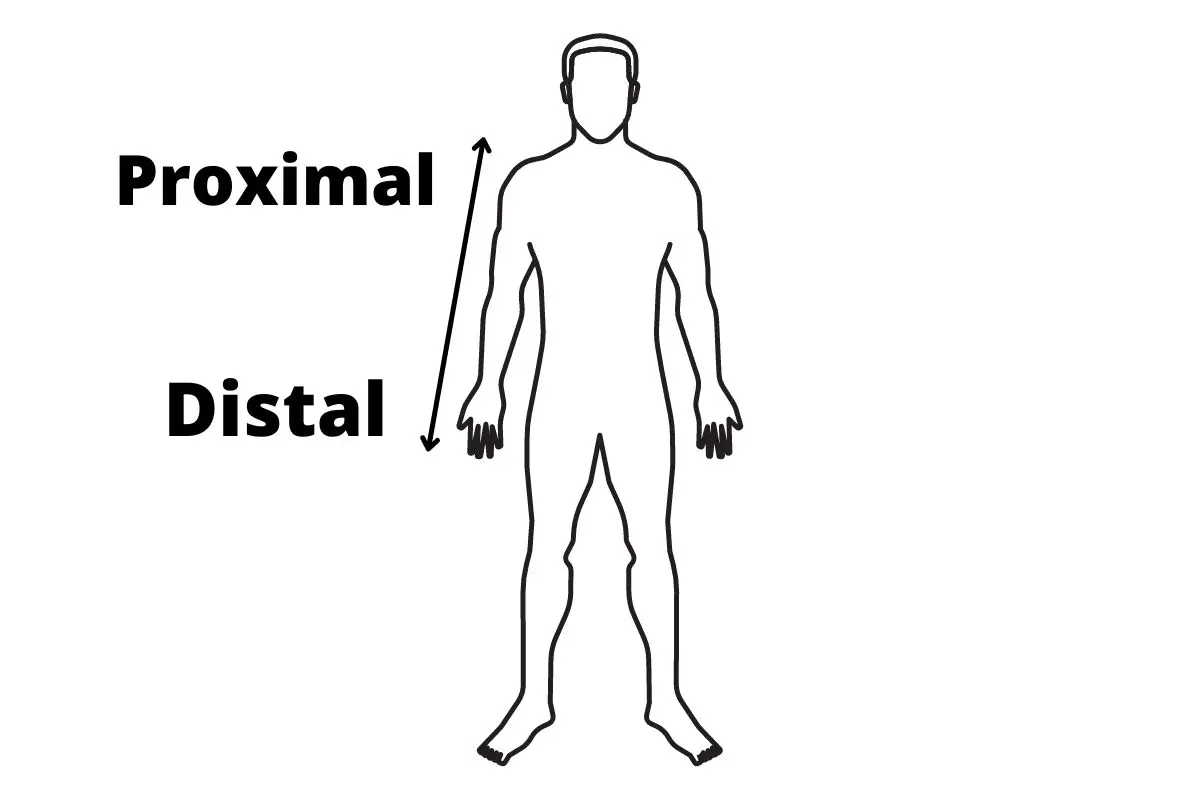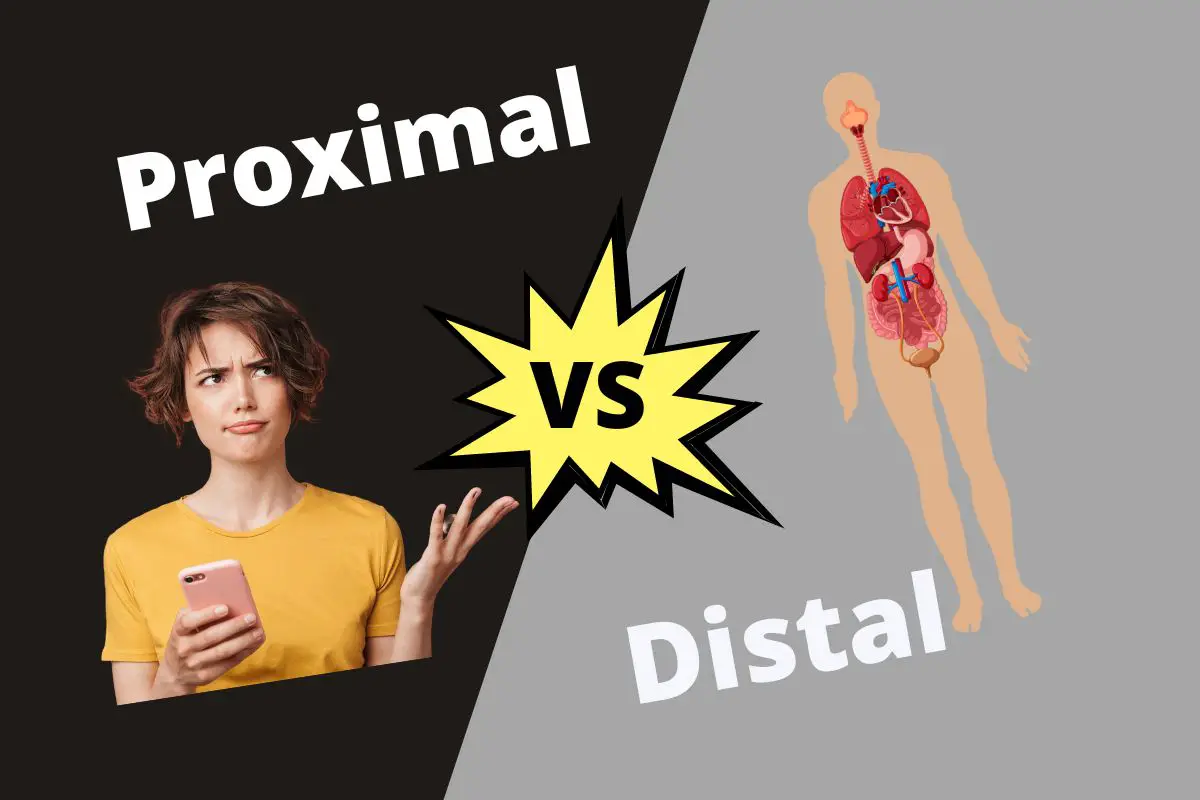Proximal refers to parts and places closer to the body’s or torso’s center. In contrast, distal refers to parts and places away from the body’s or torso’s center.
In this article, you’ll learn about proximal and distal in detail, the two significant differences, and a few examples.
Table of Contents
What is Proximal?
Proximal is derived from the Latin word proximus which means nearer. This term is used to locate the body part close to the given point of attachment. Anatomical position dictates the point of attachment.
In most cases, this point is the center of the body or torso.
Example: Talking about the upper arm and shoulder, it’d be something like this – the upper arm is proximal to the shoulder, and the hand is distal.
The upper arm is close to the body, but the hand is farther away from the body.
Note: Proximal is the opposite of distal.

What is Distal?
Distal is another anatomical term derived from the Latin word distare which means to stand away from. This term is used to locate the body part away from the given attachment point.
Example: Talking about your fingers and hand, it’d be something like this – fingers are distal to the lower arm, and the hand is proximal.
Note: Distal is the opposite of proximal.
How Do Proximal and Distal Relate to Each Other?
Proximal and distal are medical terms used to locate the position of the body structure from the point of origin. Moreover, distal refers to distance, while proximal indicates proximity or closeness.
Point of Attachment
In order to understand proximal and distal, you must know the point of attachment.
Point of Attachment: Knee
For example, if you consider the knee as a point of attachment, the lower leg is proximal to the knee while the foot is distal.
Then, the femur is proximal to the knee, which is proximal to the ankle, which is proximal to the toes. This means the ankle is distal to the knee and the upper leg.
Your body is the best visual aid to use when trying to describe proximal and distal. You can decide the point of attachment and then tell the organ location and distance using the term proximal and distal.
These terms are used in molecular biology and chemistry to refer to the atomic loci of molecules from the overall moiety of the compound.
Proximal vs Distal – Key Differences
| Proximal | vs | Distal |
| Near or close to the point of attachment. | Meaning | At a distance or away from the point of attachment. |
| Latin word – proximus | Root Word | Latin word – distare |
Meaning
Proximal means closeness or proximity. When a body part is close to the point of attachment, it is termed proximal.
Distal, on the other hand, means distance or farther away. When a body part is away from the point of attachment, it is termed distal.
Root Word
Proximal originates from the Latin word proximus, which means nearest. In contrast, distal originates from the Latin word distare, which means to stand away from.
Anatomical terms can be hard to remember. All you need is a common attachment point to start with. Then, the body part closer to this point will be called proximal, while the part farther away will be marked as distal.

Proximal vs Distal – Know the Difference
Anatomical terms are hard to remember and can create confusion. Still, with the above knowledge, you can now interpret the medical reports with these two terms mentioned.
All you need is a common attachment point to start with. Then, the body part closer to this point will be denoted as “proximal,” and the part farther away will be represented as “distal.”
Quiz Yourself
Is The Hand Proximal To The Elbow?
No, the hand is distal to the elbow because it is not directly attached to the elbow and is away from it.
What Are Some Other Anatomical Terms In Medicine?
Medical professionals use many anatomical terms to define and locate body parts concerning each other.
Here are 5 of them.
- Anterior
- Posterior
- Ventral
- Dorsal
- Superior
What Is the Sagittal Plane?
A sagittal plane (or lateral plane) is a vertical plane that runs from front to back and divides the body or its parts into right and left sides.

